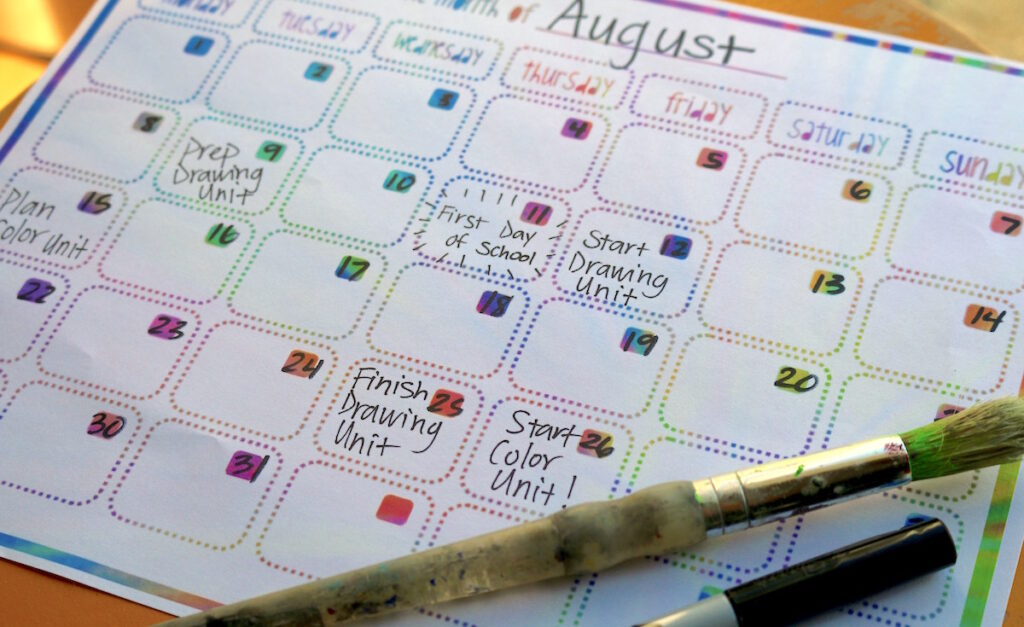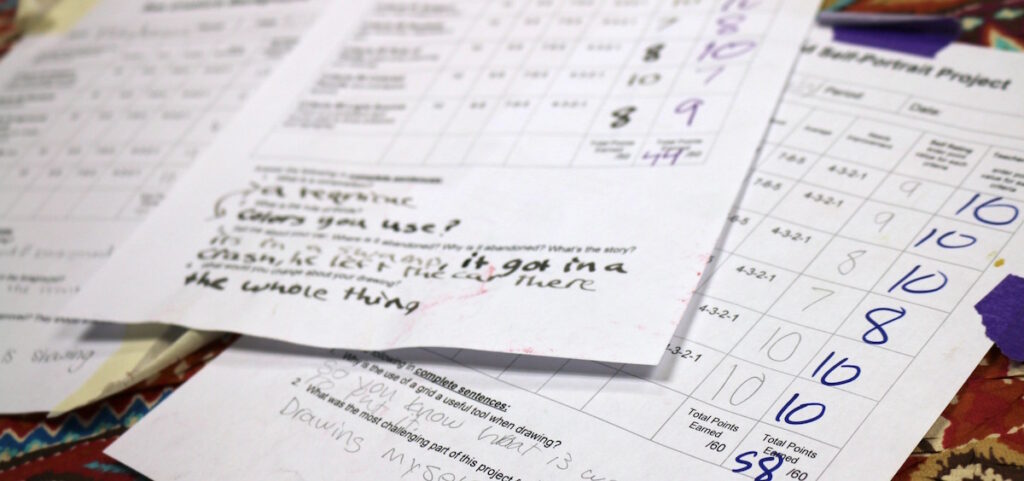Summertime for art teachers is often a time for relaxing and recharging. For many, this might be spending some extra time on the beach or actually finding the time to work on your own art. But, no matter how hard we try, there will be times we’ll think about our classrooms. The idea of starting a new school year brings about a sense of revival and change. Some of those changes might be small, like implementing new instructional strategies within your classroom, while others might be big, like teaching a new grade level.
Today I am going to share 6 tips to keep in mind if you are an art teacher transitioning from the elementary to middle school level.
1. Be aware the pacing will change.

In most elementary schools, art teachers are used to seeing their students no more than once a week. This changes drastically in the middle school setting. As middle school is looking to prepare students for high school, the schedule mimics that in many ways. Instead of only seeing your students once a week, you’ll most likely get to see your students every day for a quarter, trimester, or semester! Seeing your students every day will be a gift, but you’ll quickly discover that your students fly through art projects. A project that took 5 weeks in the elementary setting now only takes 5 days. Pacing your lesson plans will be an adjustment at first. A good tip to keep in mind is to always have the last day of a lesson planned on the first day, it will save you time in the end!
2. Start with what you know.
When I first transitioned from elementary to middle school I went into “freak out mode.” I started stressing out about what and how to teach. Until I was able to get a true feel of what middle school was like, I stuck with what I knew. Take your most successful upper elementary lessons and adapt them to fit your 7th and 8th-grade students. This way, you won’t overwhelm yourself with unneeded work and will still feel confident in the content delivery. After the first couple of lessons, you’ll be ready to explore new ideas with your students.
3. Re-think your classroom management plan.
As an elementary art teacher, I didn’t see my students often enough for them to act out and really misbehave. Because they only came to art once a week, they were always excited. It was like I was a celebrity!
This won’t necessarily be the case in middle school. At the middle school age, students have a lot more going on, both physically and emotionally. What worked for you at the elementary level won’t necessarily transition to middle school. Be prepared to make adjustments in your classroom management style!
4. Be prepared for grades to matter more.

Grades are a much bigger deal in middle school, as the world of 1’s or S’s doesn’t exist anymore. Students are beginning to participate in many other school activities and if they are not grade-eligible they don’t participate. Art is no exception, it carries just as much weight as the other classes. For this very reason, it is important to make your project expectations very clear. A clear, defined rubric given to the students before a project allows students to see exactly what is expected.
On your end, there are more projects to grade more frequently. It is okay to not grade everything that passes over your desk. Rather than having my students hand in every single sketchbook or supplemental assignment, I simply walk around and check for completion. This way, students are accountable and I’m able to ask them immediate questions.
5. Students will love to see you outside of the classroom.
Because you get to see your students more frequently, student-teacher relationships will flourish. There are also more opportunities outside of the school day to interact with your students. Whether it’s being compensated for organizing the monthly Art Club or coaching basketball, or attending a track meet or music concert, more of your time will be spent supporting your students.

I know that it’s easy to want to go home at the end of the contract day, but sometimes your students just enjoy seeing you support them in the stands even if it’s only for a few minutes. Take some time to attend those after school activities, you’ll be amazed how this can change your classroom community!
6. You are Really Part of the Team
As many elementary art teachers know, sometimes the toughest part of the job is dealing with the negative views of colleagues. Traveling between multiple buildings and not being appreciated can really take a toll on a person. But I have good news for you! In a middle school setting, you will be more than just a plan period. You will no longer be viewed as the “just the art teacher,” but a valuable member of a working team.
New beginnings can be challenging. If you are transitioning to a different grade level, you will feel overwhelmed and make mistakes – and that’s okay. Don’t forget what makes you enjoy teaching art to your students and the rest will just fall into place.
What was your most difficult challenge as you transitioned to a new grade level?
What suggestions can you share when changing teaching positions?
Magazine articles and podcasts are opinions of professional education contributors and do not necessarily represent the position of the Art of Education University (AOEU) or its academic offerings. Contributors use terms in the way they are most often talked about in the scope of their educational experiences.





